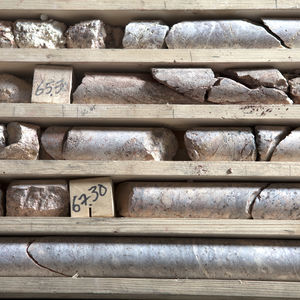Avoin luento: Characterisation of oolitic rocks, Professor Dragan Grgic

Milloin
Missä
Tapahtuman kieli
Coffee will be served before the lecture.
Professor Grgic's lecture focuses on the characterisation of the geometry of the microstructure of several types of porous oolitic rocks, such as Lavoux limestone and iron ore, and the determination of the micro-mechanical properties of the different components of these rocks, thanks to nano-indentation tests.
Oolitic rocks are constituted by an assemblage of porous grains (oolites), pores and inter-granular crystals. Scanning electron microscopy and X-ray 3D-computed nano-tomography are used to identify the different components of these rocks. Particular attention is focused on x-ray computed tomography, since this analytical method allows the characterisation of the porous network (size, spatial distribution, and volume fraction) and the shapes of oolites and inter-oolitic crystals.
The novelty of this work lies in taking into account the 3D irregularly shaped pores. Hence, to model the effect of the microstructure on the macroscopic behavior of the material, we approximate porous oolites by spheres, and irregularly shaped pores by ellipsoids. This approximation is performed thanks to the principal component analysis (PCA).
The sphericity of the approximated oolites was calculated and the value close to 1 allows us to consider oolites as spheres. To verify the approximation in the case of pores, we evaluated the contribution of these irregularly shaped three-dimensional pores to the overall elastic properties. Thus, compliance contribution tensors for 3D irregular pores and their ellipsoidal approximations are calculated using the finite element method (FEM). These tensors were compared and a relative error is estimated to evaluate the accuracy of the approximation. This error produces a maximum discrepancy of 4.5% between the two solutions of pores and ellipsoids respectively which verifies the proposed approximation procedure based on PCA.
The FEM numerical method is verified by comparing the numerical solution of compliance contribution tensors of the ellipsoids to the known analytical solution of these same shapes based on Eshelby’s theory. The difference between these two solutions does not exceed 3%.
The event is hosted by Assistant Professor Wojciech Sołowski from the Department of Civil Engineering.

Dragan Grgic obtained his PhD in Geomechanics in 2001 and his Habilitation in Geosciences in 2011. Since 2002, he teaches Geology, Geomechanics and Geophysics at the National School of Geology (ENSG, Nancy, France) as an Associate Professor. His research at the GeoRessources laboratory focuses on multi-scale experimental characterisations and modelling of coupled behaviours in rocks applied to underground geological structures: mines/quarries, gases storage, unconventional petroleum reservoirs.
- Julkaistu:
- Päivitetty:


